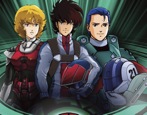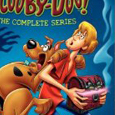Harmony Gold/Tatsunoko Productions (1984), A&E (2011), 17discs, 2028 mins. plus supplements, 1.33:1 ratio, Dolby Digital 5.1, Not Rated, Retail: $99.95
Storyboard:
In the distant year 1999, an alien spaceship crash-lands on Earth’s Macross Islands. Before the ship’s crash, humanity was on the verge of total nuclear destruction. Its appearance spurs the Earth to put aside their warring ways and humanity dedicates all of its resources to unlocking the ship’s secrets. After ten years, the research has finally paid off with the ship’s final restoration. It is christened the Super Dimensional Fortress (SDF-1), but little does humanity know that the ship’s creators, the Zentradi, have been searching for decades and now they have finally found their quarry. Soon Earth and the Zentradi engage in warfare, igniting a galactic conflict that lasts for generations.

The Sweatbox Review:
Robotech is a combination of the words “robot” and “technology” and it is meant to trigger futuristic images about a future where robots are an advanced, though commonplace, technology. Revell, a model kit company that imported mecha kits related to popular giant robot anime, coined the phrase around the same time, the television and production company Harmony Gold licensed the anime Super Dimension Fortress Macross for American airwaves. The usual legal battle ensued with a co-licensing agreement for the name’s usage.
What followed was one of the first nationally broadcast anime series to maintain the original Japanese drama, but also to have one of the most convoluted production histories. In association with Tatsunoko Productions, Harmony Gold licensed three unrelated mecha anime series and cobbled them together to create an eighty-five episode space-opera called Robotech. Harmony Gold wanted to released Robotech on a daily basis and it was necessary to have a minimum of sixty-five episodes for this to work. The original licensed title Super Dimension Fortress Macross only had thirty-six episodes. Super Dimension Calvary Southern Cross and Genesis Climber Mospeada were two other series from Tatsunoko Productions, so they were drafted and each added another twenty-four episodes to the line-up. Each anime was labelled as a different saga and focused on a different “generation” in the ongoing war.
Here’s how Robotech is broken down:
| Super Dimension Fortress Macross | Super Dimension Calvary Southern Cross | Genesis Climber Mospeada |
| 1st Robotech War | 2nd Robotech War | 3rd Robotech War |
| The Macross Saga | The Masters Saga | The Next Generation |
Broken down it doesn’t seem so confusing, does it? It would be simple if Robotech consisted of three anime lost to the whirlpool of time, but Super Dimension Fortress Macross is a very popular franchise in both Japan and the US. It is akin to Gundam and Star Wars in that it has numerous spin-offs and a large fanbase. Super Dimension Fortress Macross was also released in the US as a standalone title, separate from its Robotech counterpart adding to the confusion.
This creates an interesting dynamic as two popular series pull form the same continuity, at least for the first part of their storylines. After the First Robotech War, the stories diverge into their own appropriate universes. In essence, Robotech can arguably be considered an American cartoon more than a Japanese anime. While the animation and main story points are from the original Japanese anime, Robotech is uniquely an American creation.
Similar Americanization happened when Hanna-Barbera licensed the show Science Ninja Team Gatchaman and transformed it into Battle of the Planets. The notorious Speed Racer was Mach Go Go Go before it reached western audiences. Toei Animation and World Events Productions played into the robot popularity with Voltron: Defender of the Universe. Osamu Tezuka’s Jungle Taitei aka Kimba, the White Lion was another westernized anime. Even renowned storyteller and animator Hayao Miyazaki saw his legendary film Nausicaa of the Valley of the Wind butchered and Frankensteined into Warriors of the Wind. Each of these anime, including Robotech, play a significant role in bringing anime into the US’s mainstream entertainment market.
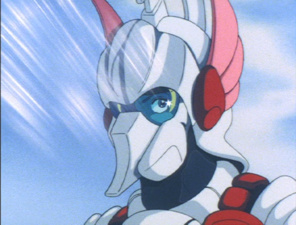
Most westernized anime loses its complex plot details, but Robotech took a different approach by preserving the rich plots. It’s storytelling also deviated from the norm by not being a show focused on selling merchandise. Most cartoons of the 1980s and into today, were only made to sell toys and each episode kept pushing their marketable characters into viewers’ faces, inciting that “buy me” desire we all deal with at times. Robotech allowed their characters to be center stage without a constant barrage of color and sound, except Minmei’s singing, emphasising them.
The First Robotech War: The Macross Saga focuses on how humanity has adjusted all of their cultures and societies to rebuild the crashed SDF-1 in Macross City. Once it is rebuilt and goes for its maiden voyage, the SDF-1 picks up an alien signal from the Zentradi and responds by firing one if its cannons. For years, the Zentradi have been searching for the SDF-1, because it is one of the last remaining caches of protoculture-a powerful energy source. Once the Earthlings fire at them, they declare war.
Rick Hunter is a young acrobatic pilot and a close friend of Roy Fokker, a military pilot assigned to the SDF-1. Rick is accidentally pulled into combat when the Zentradis attack Earth. Unused to a military airplane that transforms into humanoid robot, he does as much damage to Macross City as the invading forces. He encounters Lynn Minmei, a sixteen-year-old girl that quickly becomes his romantic interest. Things move quickly for Rick, Minmei, and the rest of the cast. To avoid destruction, Macross City is moved into the SDF-1, Rick joins the army and is made a squadron leader, and Minmei becomes a singing idol. Lisa Hayes, Rick’s commanding officer, adds a third point to a love triangle—one of the saga’s main plot devices.

The Zentradi become enamored with Minmei’s singing, owing to how their culture is solely based on warfare. Concepts such as kissing, love, and marriage are foreign to them. One crucial element for the Macross Saga is romance, often overshadowing the battles. At times, it feels like you’re watching a soap opera rather than a science-fiction action show, but the romance element made Robotech stand out from other cartoons of its day.
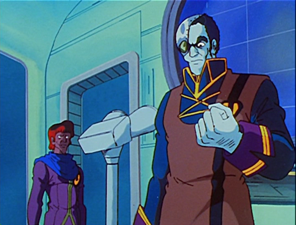
In contrast, however, so much content is packed into the first thirty-six episodes that many things are overlooked or rushed. Protoculture is barely mentioned. It is not clearly explained what it is and why the Zentradi want it, until the second saga. Also the relationship between pilot Max Sterling and the Zentradi warrior Miriya Parina is not even believable. They encounter each other in a casino, Max asks Miriya on date, then she tries to murder him, he stops her, and then asks her to marry him. The power of love overpowers Miriya and they are married faster than a robot can transform into an airplane. The wedding takes place late in the series and at that point everything outpaces your suspension of disbelief.

Minmei’s singing is another less than satisfying factor. Harmony Gold did an excellent job matching the English vocal tracks to the characters’ lip movements, except when Minmei sings. It doesn’t even look like they attempted to match the words with the character’s mouth, much less the lyrics to her songs are so generic it’s impossible to imagine that she stopped the war with her voice. Even worse, she sings the same two songs over and over for the first twenty episodes. Rebecca Forstadt, the voice actress, is an average singer; Simon Colwell would have kicked her out of an American Idol audition after her first lyric. Mari Iijima, the Japanese voice actress, has a flowing voice and it’s easy to understand how she became a pop idol after her debut in Super Dimension Fortress Macross.
It was a relief that the Masters Saga (Super Dimension Calvary Southern Cross) did not have much singing, though the plot wasn’t as intriguing as the Macross Saga. The Second Robotech War, follows Dana Sterling, the daughter of Max and Miriya Sterling. She is only seventeen when she is made a lieutenant in the United Earth Forces and given her own command. Near the end of the First Robotech War, a nuclear fallout between the Zentradi and humans destroyed much of the Earth’s surface, leaving Macross City a forbidden zone polluted by radiation. The United Earth Forces are charged with protecting the planet from any hostile alien attacks. A new alien race calling themselves the Robotech Masters invade Earth for the sole reason of capturing the SDF-1—the only known ship equipped with a protoculture factory. The Robotech Masters’ protoculture supply is dangerously low and in order for them to survive they need to restock, however the secret of making protoculture was lost to them.
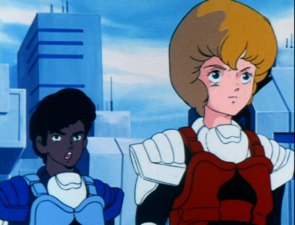
Unlike the first saga where mecha played second fiddle to the love triangle, the Masters Saga sees more concentration in that area. Dana and her team are usually seen piloting one battle machine or another and the Robotech Masters have their own Bioroid mecha army
Dana is an apt soldier, though she doesn’t follow strict military protocol. She is given to breaking the rules to carry out her missions and off duty she acts in a juvenile manner. This doesn’t stop her from carrying out her duty, however. Her romance with the captured Bioroid pilot Zor Prime initially puts an end to the war, much like Minmei’s songs in the first. The second arc has a slower pace, but you aren’t treated to the same in depth character development that outpaced that war story in the first. Dana is very shallow and predictable, her team isn’t fleshed out, and Zor spends way too much time struggling to regain his sanity.

The Masters Saga added the necessary exposition the first saga lacked, but in itself lacked the dramatic quality possessed by the former. The last few episodes on the series, however, are the most exciting as the characters break out of their clichéd shells and set up the dramatic tension for the next story arc. Zor Prime crashes the Robotech Masters’ ship into Earth, releasing all of the protoculture into Earth’s atmosphere and making the planet even more inhospitable to humans. This heroic act only furthers the conflict, drawing the attention of yet another alien race to Earth.

The Next Generation or The Third Robotech War has a better story and characters. It almost feels like you’re watching an entirely different anime, but wait…you are: Genesis Climber Mospeada. Out all of all three series is the most apparent that Robotech was three mismatched series with the third and final arc. The Macross and Masters Sagas were connected a familial tie between Max and Miriya Sterling and their daughter Dana. None of the main characters in Masters had their own children, so The Next Generation concentrates on a entirely new set of characters without any personal connection to the previous. After Zor Prime’s noble sacrifice, the Invid notice that the little backwater planet Earth makes their protoculture detectors go off the roof. They invade, Earth fights back, and the usual story development takes place. Our hero is Scott Bernard is a soldier from the Mars Division of Earth’s defending forces; he and his unit are sent to Earth to destroy the Invid’s home base at Reflex Point. They are taken off guard by a surprise Invid attack, which destroys his ship and kills everyone on board, including his fiancé. Scott is the ever vigilant soldier and he marches forward battling the Invid with his personal cyclone combat armor—a motorcycle that transforms into a battle suit. He gathers a group of other resistance fighters on Earth, including Marlene/Ariel, Rook Bentley, Rand, Lance Belmont, Lunk Austin, and Annie LaBelle. Annie is a young teenager who provides much of the comic relief by claiming any man who is strong and brave is going to be her husband. Marlene/Ariel is an amnesiac woman, the resistance fighters pick up and try to help regain her humanity. Scott dubs her “Marlene,” because of her resemblance to his dead fiancé and she becomes his primary romantic interest. She turns out to be an Invid spy sent to infiltrate the resistance operation and stop it from within. Lancer is another interesting character as he starts out the series as female lounge singer, but reveals himself as a capable male soldier. The other team members fill generic niche roles: the goofball, the huge and dumb guy, the token female, etc.

The Next Generation quickly falls into a common cartoon theme: group of rebels formulate a group to fight the enemy and reclaim their world from evil. Often these heroic groups operate in the shadows, far from the enemy’s influence, but the more victories they win they come closer to invading the enemies’ stronghold—sort of like working their way through a spiral until they come to the center. Scott and his group win, of course, but the end of the Invid conflict sets Robotech up for the fourth war, but it is the end of the original series.
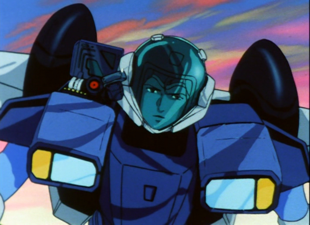
Each Robotech war preserves most of the original Japanese plotlines with small edits and rewrites to make them one cohesive epic. With similar character and mecha designs thanks to all of the anime being from Tatsunoko Productions, it wasn’t that difficult to connect all three anime together. The A&E compilation of the series does an excellent job of preserving the series’ quality, including keeping several nude scenes of the female leads which got the axe when aired on US TV. As a whole, the series does have many storytelling weaknesses and unbelievable situations and characters that won’t appeal to older viewers, but this cartoon was originally made to cater to the after-school crowd. Even though the technology is from the “future,” it is dated by 21st century standards: people still use record players and payphones, computers are clunky and use dot matrix printers, and digital interfaces aren’t sleek. Robotech is a product of its time, but younger audiences may not identify with this world and may be even turned off by the cell animation. Older audiences have the nostalgia factor on their side and for them it’s brilliant
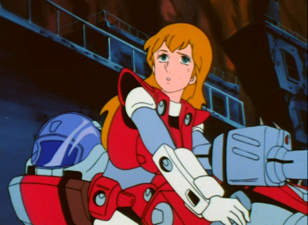
Robotech plays a significant role in bringing anime to the US, but also for cartoons made in the West as well. It demonstrated that audiences enjoyed serious animated dramas, proving that cartoons weren’t just for children. In retrospect, while Robotech helped proved this point, the general masses still believe the opposite. Some things never do change. Robotech remains a thrilling space opera epic cobbled together from several anime. This type of creation is one of a kind and as US audiences are more interested in unedited shows from the rising sun these days, there will probably never be anything like again.
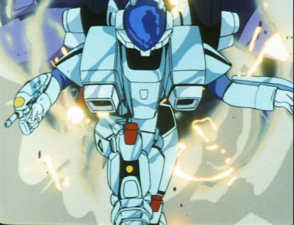
Is This Thing Loaded?
All systems are green on special features! There are four discs astutely named the The Robotech Archives with over ten hours of bonus features to keep your love for Robotech long after the credits for The Next Generation stop rolling. Along with content pulled from prior DVD releases, there are several new features to entice fans to upgrade their old disc sets.
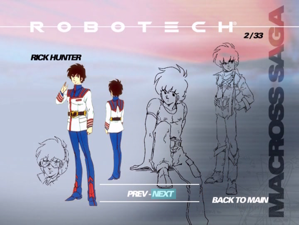
Normal features to most DVD films are deleted and alternate scenes, but to this box set they are brand new. With Robotech being compiled from three different anime, the editing room floor must have been covered with discarded celluloid. These scenes are fun to view, many would have added a new angle to the series while you can understand while many were removed. Other features common to anime DVDs are included: original opening and closing animations, character bios, storyboard art, pencil character designs, mecha model sheets, miscellaneous pre-production art, etc. Among these were a few extras that you have to journey to Youtube to find: toy commercials, international clips, videogame presentations, merchandise galleries, comic book gallery
This is average fair for any DVD, the numerous amount of it is however staggering, but the true prizes are the original English pilots for Super Dimensional Fortress Macross and Genesis Climber Mospeada. The pilots aren’t restored and show their age through faded colors and really bad theme songs. After watching the pilots, you will be very glad that Harmony Gold changed it’s battle tactics and created Robotech instead. Even the voice over narrator does not measure up to Jean-Claude Ballard’s calming, authoritative voice. There are clips from Harmony Gold’s Galaxy of Stars Robotech convention. It’s quite the trip into eighties fandom, but it only tops out at 1:30 minutes, so it’s only a glimpse.
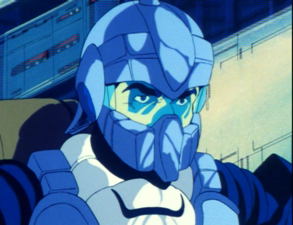
After the original eighty-five episodes, Harmony Gold attempted to continue the series with Robotech: The Sentinels, but the project was cancelled after only three episodes were animated. The three episodes were then turned into a feature length film and released on VHS. The complete film is viewable. Rick Hunter, Lisa Hayes, Dana Sterling, Scott Bernard, and other characters from the three sagas finally meet and connect all the sagas together. It’s on par with the rest of series, though it has that rushed feeling of a studio scrapping together a movie to make some profit on a scrapped project.
Robotech: The Movie is another extra. It takes animation from Megazone 23 and Super Dimension Calvary Southern Cross and edited them together for plot that only ties in loosely to the Robotech canon. The movie had a limited release in the US, but it failed miserably. The version on the DVD is labelled as “edited for content,” so the complete film is still only available as a bootleg. Unlike a bootleg, you get a trailer, audio commentary, animatics opening/closing sequence and storyboards. It’s worth viewing for it’s base in Robotech production history, but it’s not that entertaining.
The best feature brand new and is located on disc three: Carl Macek’s Robotech Universe, a documentary about the making of Robotech and it’s history. Carl Macek was the producer, writer, and editor for the series through it’s early run at Harmony Gold. He left after the Robotech: The Sentinels failure. He offers first hand perspective and behind the scenes stories that you will not find on Wikipedia or any fan site.
One last new feature to the DVDs are music videos featuring Minmei and other singers from the series. They’re mildly entertaining, but it is not recommended to watch all of them in one sitting.
Case Study:

While A&E released a content loaded Robotech: The Complete Original, Series DVDs, the physical box set is rather simple. The DVDs are housed in a cardboard case with Rick Hunter, Scott Bernard, and Dana Sterling superimposed against green holographic graphics for a catchy sci-fi feel. The Robotech logo is below them. The same image is on the spine, while on the back is a brief summary of the series with a rundown of the special features. Each series and the special features are in a single multi-DVD case with pictures of relevant main characters on the front with individual series information on the back. Most anime box sets are elaborate with extra bonuses like a poster, small trinket, or a case made of special material. With DVDs going on the wayside, A&E probably thought it was wiser to invest their money in restoring the image quality and special features. Another reason is that A&E used an unadorned box set to contrast the detail heavy continuation and production history. If one thinks about it, the box set’s simplicity is calming after a Robotech marathon.
Ink And Paint:
A&E did a marvelous job restoring the animation for all three sagas in their full screen ratio. Every color is bright and bold as if the paintbrush had just left the celluloid. The original quality is preserved with that “grainy” feeling you get from older animation. Other restorations jobs lose this retro effect, which in turn harms the animation’s quality. The Masters Saga, however, has a thick cloud of haze over everything, while The Next Generation is as clear as The Macross Saga. This could be due to it being a different anime. One other factor that anime fans will notice is how the art style is similar to another popular anime of he 1980s: Gundam. After Gundam’s skyrocketing popularity, other production studios sought to cash in on its wake with their own mecha series. They achieved this was copying the art style, especially the character designs. This is a common characteristic in anime that traces it roots all the way back to Osamu Tezuka and Astro Boy, after he copied the big eyes and small mouth facial features from Betty Boop and Disney cartoons.

Scratch Tracks:
Unlike other anime series, Robotech is unique in that it actually doesn’t have any original Japanese dialogue. Since it is a combination of three unrelated series cobbled together for western television, the only tracks available are English and Spanish. The dual language tracks are both in Dolby Digital 5.1. If you are interested in the original Japanese tracks, you will need to seek the individual series releases. The full audio compliments the restored animation, though parts are of the sound are only in mono and it is not detectable if you fully immerse yourself in the story. The enhanced background music and theme music are recycled for each saga, so you will get tired of it. One would have thought that Harmony Gold would have invested more in music.

Final Cut:
I can sum up Robotech: The Complete Original Series from A&E in one sentence: you must buy it. Each of the three sagas are unedited, fully restored, and digitally persevered on a DVD, so you no longer have to wait until school lets out to watch it on TV. One general complaint is that each episode has the full opening and ending credits, adding around five minutes to viewing time. It is easy to press the skip button, but it would have been nice if A&E had developed a play where those titles are skipped automatically. The four-disc special feature is enough cause alone to purchase the box set, every small detail from historical to music videos will occupy you for ten longs afters you watch the eighty-five episodes. Previous Robotech DVD releases were big and bulky with multiple cases, but this one will easily slide into your DVD rack, taking up less room with triple the content. Cartoon and anime fanatics will love this box set for its historical significance and the nostalgia factor, while younger fans may take some time to warm up to the old animation and mecha. They do not make cartoons like this anymore, if anything at least rent it for that reason.
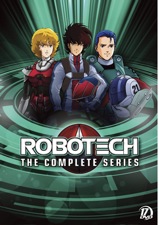 | ||
 |


